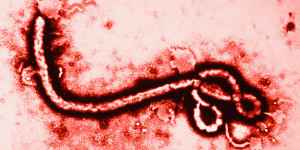The CDC issued an infographic for healthcare workers, "Could It Be Ebola?"
On October 15, Cal/OSHA issued an Interim Guidance document on Ebola. Click here to read it.
The University of Nebraska Medical Center created two illustrated guides to putting on and taking off biological personal protective equipment:
The Centers for Disease Control and Prevention (CDC) confirmed on September 30 the first case of Ebola to be diagnosed in the United States in a person who had traveled to Dallas from West Africa. The person sought medical care at Texas Health Presbyterian Hospital of Dallas after developing symptoms consistent with Ebola. Based on the person’s travel history and symptoms, the CDC recommended testing for Ebola. The medical facility isolated the patient and sent specimens for testing to the CDC. The CDC and the Texas Health Department reported the laboratory test results to the medical center to inform the patient. Local public health officials have identified all close contacts of the person for further daily monitoring for 21 days after exposure. The patient died of Ebola on October 8 and was cremated. The CDC confirmed on October 12 that a healthcare worker who had been caring for the patient in Texas has tested positive for the virus. Ebola’s further spread can be halted, according to the CDC, thorough case finding, isolation of ill people, contacting people exposed to the ill person, and further isolation of contacts if they develop symptoms.
The Centers for Disease Control and Prevention has vital information and resources, as well as the latest news, about Ebola Hemorrhagic Fever on its website. Here are just a few of them:
• What is Ebola’s clinical definition and clinical course?
• What do you need to know as a healthcare worker?
The CDC recommends the use of respiratory protection during all aerosol-generating procedures performed on a suspected/known patient. In California, hospitals must adhere to the Cal/OSHA Aerosol Transmissible Disease (ATD) Standard. SEIU and the Nurse Alliance of California fought for and won the ATD standard in 2009 and it is the only mandatory standard in the United States that includes Ebola. You have the right to request and receive your employer’s ATD policy and to make certain you are provided the appropriate trainings on the Cal/OSHA regulation.
Strict compliance with Cal/OSHA's Bloodborne Pathogens (BBP) Standard is also crucial, including the use of safer needles and sharps, as required in the BBP. Frontline workers must be involved in the evaluation and selection of these safer technologies.
Please print out our Ebola: Resources flyer and share with your co-workers. The Director of Cal/OSHA has informed us that the agency will be posting additional information and resources on its website this week and we will update this blog post with a link as soon as we have it.
-- Richard Negri, SEIU 121RN Health and Safety Director

